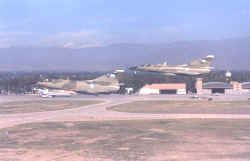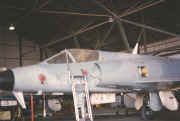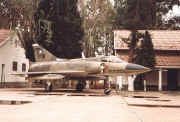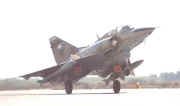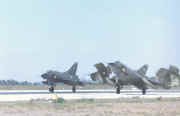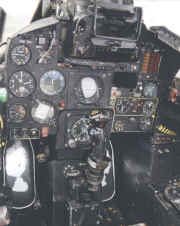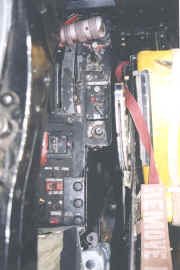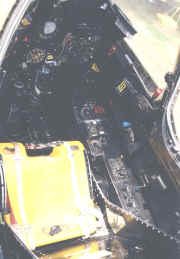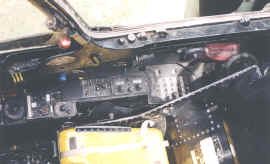 |
|||||||||||||||||||||||||||||||||||||||||||||||||||||||||||||||||||||||||||||||||||||||||||||||||||||||||||||||||||||||||||||||||||||||||||||||||||||||||||||||||||||||||||||||||||||||||||||||||||||||||||||||||||||||
|
Airplanes/History |
|
||||||||||||||||||||||||||||||||||||||||||||||||||||||||||||||||||||||||||||||||||||||||||||||||||||||||||||||||||||||||||||||||||||||||||||||||||||||||||||||||||||||||||||||||||||||||||||||||||||||||||||||||||||||
|
The Mirage IIIB/C in Argentina Part II |
|||||||||||||||||||||||||||||||||||||||||||||||||||||||||||||||||||||||||||||||||||||||||||||||||||||||||||||||||||||||||||||||||||||||||||||||||||||||||||||||||||||||||||||||||||||||||||||||||||||||||||||||||||||||
|
by ©2000 Juan C. Cicalesi & Santiago Rivas |
|||||||||||||||||||||||||||||||||||||||||||||||||||||||||||||||||||||||||||||||||||||||||||||||||||||||||||||||||||||||||||||||||||||||||||||||||||||||||||||||||||||||||||||||||||||||||||||||||||||||||||||||||||||||
|
photos from the Hernan Casciani's collection |
|||||||||||||||||||||||||||||||||||||||||||||||||||||||||||||||||||||||||||||||||||||||||||||||||||||||||||||||||||||||||||||||||||||||||||||||||||||||||||||||||||||||||||||||||||||||||||||||||||||||||||||||||||||||
|
Part I > Click here The X Squadron with the Mirage IIIC
On July 30th, with the flight of the C-704 and C-706, the Mirage III units completed their first 1000 flight hours with the Squadron. Shortly afterwards, on August 1st, the first C-712 arrived to replace the C-707 and on October 25th the C-706 suffered and accident as it got off the runway, although it was later repaired and resumed flying on December 30th. Although these five planes gave the Squadron a good combat capacity, the final conclusion included in the 1985 Annual Memory of the unit expressed the following: "taking into account the operational responsibilities of the Brigade, it was seen that with the current air material (M-IIIC), this unit does not have the necessary operation conditions, neither quantity nor quality, for which reason the replacement with modern units (M-5P) that can comply with this mission is requested".
This request was reviewed by the authorities of the Argentine Air Force, who decided to send all ten Mirage 5P units to the X Air Brigade in 1986.
The 55 Squadron
On January 18, 1985, the IV Brigade received the last two-seat plane, the C-720, followed by the C-711 on January 22nd and the C-709 on January 28th. By the end of that year, 13 planes had been delivered, pending the delivery of another three units (C-705, 718 y 719). On January 22, 1985 the first flights were made, followed by the "solo" flights on March 18.
Also in 1985, the Air Force made its first air combat exercise, named Zonda 85 Operation, with the participation of the 2nd Surveillance and Air Space Control Group and all brigades with the exception of I, II and X. These exercise consisted of air combats between the different planes of the air force, with the participation of the Mirage IIIC, Mirage IIIE, IAI M5, A-4B and C Skyhawk, IA-58A Pucará, Morane Saulnier Paris and F-86F Sabre. The Mirage IIIC proved to be the most agile plane.
The only difficult prey for a MK-IIC was the FMA IA-58A Pucará, since due to the low altitude at which the Pucara could fly, the Mirage could not possibly enter a dog fight but it had to plunge from a high altitude (generally with the sun at its back), make a passage, shoot and escape. The problem was that the IA-58 was a highly maneuverable plane and they usually operated in duos, protecting their tails, for which reason one of them was always facing the Mirage. On several occasions, the IA-58 units took some Mirage pilots on their rear seats while the two-seat Mirage would take Pucara pilots so that they could become acquainted with the combat tactics of the different units.
During these exercises, the performance of the different Mirage versions was tested, a MJ-IIIC flew with an IAI M5 and a M-IIIEA, at 300 knots of speed they accelerated and the M-IIIC was always the first to reach 500 knots. Then, at 500 knots all three planes raised up their noses by 30° and the M-IIIFC was the one that always reached the maximum altitude. At the end of that year the Mirage IIIC units belonging to the IV Air Brigade had completed 1150 flight hours and would also fly the same quantity of hours in 1986. In July 1985, there was a possibility of selling them to El Salvador, but negotiations were unsuccessful. The combat exercises continued during 1986, when the three remaining planes were received. On November 7, the five units in Rio Gallegos were transferred. Therefore, the 55th Squadron was the only unit to have Mirage IIIC units. On August 12, the II Squadron (with the F-86F Sabre) belonging to the IV Brigade was retired, In this way, the Mirage became the only combat planes in Mendoza, operating in the brigade along with the Morane Saulnier MS-760 Paris, the Lama helicopters and the new FMA IA-63 Pampa. Since the M-IIIC were not in good shape, the C-701, C-702, C-703, C-704, C-706 and C-708 were retired in 1986 and some of them would never fly again. Budgetary restrictions and the age of the materials, evidenced that despite their short time in service, the useful lives of these planes were approaching their end.
According to many of their pilots, the two-seat plane was more maneuverable than the single-seat plane, since it was more stable. Its weight was similar but it did not have a radar and carried on its nose the electronic equipment that the single-seat unit carried in the place of the second pilot.
In 1987, the activity reached 1500 flight hours and seven planes were retired, among them the C-706, 708, 709, 710 y 717. On that same year a new camouflage was tried on the C-715 by replacing the green and earth brown colors with two shades of marine grey, in order to disguise the plane on the platform. This color scheme was just used for a short time and then the plane returned to its original color scheme.
Between August 7 and 11, ten units were sent to Buenos Aires in order to take part at a parade celebrating the 75 anniversary of the Argentine Air Force, being this the only time that such a number of planes took part in an air show.
In 1988, there were fourteen planes in service and seven retired. All planes in service were equipped with a Bendix DME-2030. On July 29, during a test flight after an overhaul in Rio Cuarto, the M-IIIB C-270 suffered an engine failure and crashed. The pilot died and the mechanic occupying the second seat saved his life. The C-718 also had a minor accident when one of the main wheels burst at a take-off and had to stop against the retaining barrier.
Between March 27 and April 7, 1989, the "Gala1 operation" took place, for which reason six planes were sent to Rio Gallegos for an air-to-air combat between March 30 and April 5. On October 6, the Ullum operation took place in San Juan.
On June 12, the C-712 suffered an accident while in flight and, although it managed to return to its base, it was retired and retired from service shortly afterwards. On June 26, the C-705 crashed near Media Agua, San Juan, and Ltd Carlos Bellini died. On September 31, the C-704 and C-715 were also retired, the C-716 had to be repaired and the C-708 was retired from service. By the end of that year, eight Mirage IIIC had been retired while nine of them were still part of the group, though only six were in service due to the lack of operative engines. The IV Air Brigade came to the following conclusion as regards the Mirage IIIB/C: : "This Weapons System evidenced its limitations for the operation due to problems related to the lack of longitudinal stability, still under investigation by the Accidents Investigation Committee".
The last year of normal operation of the Mirage IIIB/C was 1990, although they were progressively retired from service and by 1991 all of them had been retired and the 55th Squadron disappeared. But these planes were definitely retired form service in 1994. From that moment on, only the C-717 continued to fly, now painted with a striking color scheme in white, red and blue, and belonging to the Center of Weapons and Operative Systems Tests (C.E.A.S.O.) under the "Dirección de Sistemas del Comando de Material". Nowadays, it is the last Mirage IIIC in service in any air force in the world, with several remaining years of service.
The two two-seat planes were in Rio Cuarto at the disposal of the Materials Command until 1998, when they were retired from service. As regards the rest of the planes, nine of them are still at the depot at the IV Air Brigade and the rest of them were sent to several Museums and Monuments.
Mirage IIIB/C in the Argentine Air Force
Among the delivered planes you could find the following Israeli serial numbers, but it was impossible to establish their origin since there is no information about it on the documents of the Argentine Air Force and on many occasions, while in service in Israel, they suffered changes for which reason there are more serial numbers than there are planes: Mirage IIICJ 133, 159 (C-715), 703, 719, 720, 732, 743, 755, 758, 766, 768, 778, 783, 785, 798, 799. As regards the Mirage IIIBJ units the correspondence is as follows: 618 (C-720), 639 (C-721) 787 (C-722), but from these three planes, two of them carried at some point the serial numbers 186 and 988. The serial numbers that the planes bear were given by the Israeli and do not correspond to the original ones given at the time of manufacture. The serial numbers corresponding to the batch of 72 Mirage IIICJ and five Mirage IIIBJ manufactured by Dassault are as follows: Mirage IIICJ: 101 thru 148, 152, 154 thru 156, 159, 160, 162, 165 thru 167, 169, 170, 173, 174, 176, 177, 179, 180, 182 thru 187. Mirage IIIBJ: 236 thru 240 Victories of the C-715 The C-715, bearing the Israeli serial number 159, is one of the most successful Mirage IIIC, with a great number of victories obtained on enemy planes during the Six Days War, Yom Kippur and several combats with the Arab countries in the Middle East. This plane was severely damaged during a take off on 7/10/73 and had to be reconstructed by IAI, resuming service in October 1974. Almost all other planes exported to Argentina won air-to-air victories, like # 133 with two Egyptian MiG-17 and MiG-21 and a Syrian MiG-21 and the BJ 186 that shot down three MiG-21 on October 24, 1973. In addition, the C-722, at that time with the serial number 787, intercepted and shot down an Egyptian MiG-21 over the city of Tel-Aviv. The Mirage IIIC having the record of shot-downs is the C-713 with 26 victories. This plane will be reexported to Israel at a symbolic price of U$S 1.- Shot-downs of the C-715 belonging to the 101 Squadron of the Israel Defense Force/ Air Force
Cockpit details, Mirage IIIC
|
|||||||||||||||||||||||||||||||||||||||||||||||||||||||||||||||||||||||||||||||||||||||||||||||||||||||||||||||||||||||||||||||||||||||||||||||||||||||||||||||||||||||||||||||||||||||||||||||||||||||||||||||||||||||
